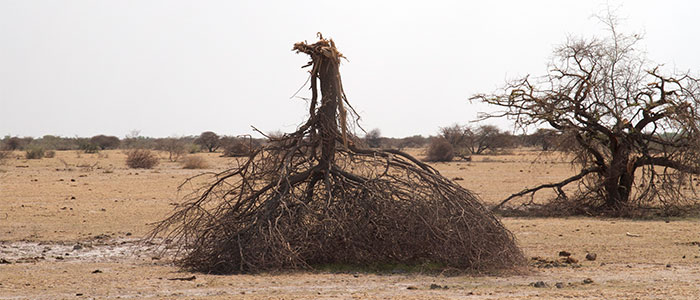Running is my greatest teacher
 Promoting teamwork through challenge
Promoting teamwork through challenge
In September, Ray Zahab had the opportunity to travel to Utah for the inaugural Grand to Grand Ultra,
a 6 stage, 7 day self-supported foot race covering 167 miles (268
kilometres). “Having participated in many multi-stage expeditions, my
role was to support and advise the race director,” says Zahab.Grand to Grand was supporting Zahab’s youth expedition foundation, impossible2Possible through their event. As part of that support, long time i2P volunteers were offered the opportunity to participate in the race from the Grand Canyon to the Grand Staircase. “Three i2P volunteers took part, including my brother, John, who has never done an ultra event before but finished 5th overall out of 65-70 athletes from all over the world” says Zahab.
Along with helping the race director organize the race’s logistics, Ray Zahab’s behind-the-scenes support included assisting runners pack their bags as lightly as possible using all the tricks he’s learned on many self-supported expeditions like cutting labels and repackaging food. “I was taping feet. If someone had a blister, I would help with that.”
“It was incredible to be able to share many of the things I’ve learned, but also be able to help the race organizers,” says Zahab who loved watching people push themselves.
“The whole time I was out there, I was thinking about the i2P Botswana Youth Expedition,” says Zahab.
This expedition is from October 29-November 12 2012 and involves 8 youth ambassadors from Canada and the United States. Every time Zahab leads a youth expedition, he tries something different.
On this expedition, the youth are divided into two groups of four. Each group will take a turn running 40-50K for four days in the Kalahari Desert while the other group offers support, assists with logistics and acts as the education team, creating videos and conducting experiments. There’ll be one turn-around day as the groups switch from running to education/support.
Just as Zahab learned so much and was able to gain a whole new perspective on races through assisting the Grand to Grand race director, the students will have that opportunity on the expedition. “This is another layer of learning for the expedition and another layer of lessons that would make the event more meaningful,” says Zahab.
On every expedition the youth create their own content to share with students at schools around the world. In this case, the ambassadors are learning about water and about plants’ and animals’ adaptation to short supplies of water in the desert. While they are running through the desert, the ambassadors are also learning first-hand about how their own bodies process water while doing vigorous exercise. Water filters are another topic the youth are learning about. Each day they share these findings with students at schools around the world through video conferencing.
Zahab points out that unlike the Grand to Grand racers who run during the day and rest in the evening, the i2P youth ambassadors are busy running or supporting all day and then uploading content, answering questions from students, connecting with residents of Botswana and getting ready for the next day’s adventure in the evening.
Before he left on the Botswana expedition, Zahab said he couldn’t wait for the young people to see the desert, meet the people who live there and realize that through working hard and working together they would be able to accomplish something extraordinary.






























